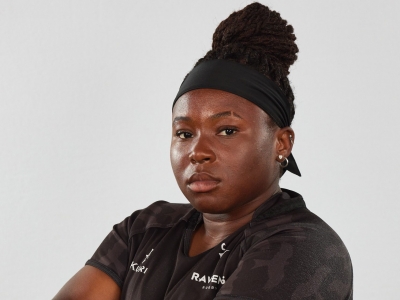By Julie Garlen
Recently, the tech ethics writer at Forbes Magazine argued the popular classroom digital behaviour management and communication system, ClassDojo, is indoctrinating students into a culture of surveillance.
The Forbes writer was partly drawing on new research that examines how the platform is altering schools through the use of a centralized digital network and creating a culture where children are self-conscious of performing.
ClassDojo assigns students brightly coloured monster avatars that teachers can use to award and subtract points for behaviour. Teachers can record and photograph student behaviour and display student standings to the entire class by projecting from their desktop or mobile phone. They can also share that data in real-time with parents.
According to the ClassDojo company website this application is “actively being used in 95 per cent of all K-8 schools in the U.S. and in 180 countries.”
A recent Montreal Gazette article says according to numbers obtained from the company “70 per cent of Canadian elementary schools” use the free app.
Meanwhile, Information and Privacy Commissioner of Ontario Brian Beamish told the Ottawa Citizen that the use of ClassDojo “should be setting off alarm bells.” He continued:
“If I were a parent, I wouldn’t go into this with my eyes closed. This is one (issue) we’re going to have to have on our radar.”
The New York Times reports privacy law scholars say ClassDojo and similar applications are being adopted without considering where and how the data might eventually be used. The company that makes ClassDojo asserts that the Times misrepresented its privacy and security practices, but concerns about harvesting data about children outside of the U.S. have already surfaced as the international market grows.
Yet beyond privacy, there are additional reasons to be concerned about ClassDojo — particularly from the perspective of children’s rights.
Surveillance schooling
The rights of children in Canada are reflected in
several key guiding principles of the Convention on the Rights of the Child, ratified by Canada in 1991. For example, Article 3 stipulates when adults make decisions on behalf of children, the best interests of the child should be a primary consideration.
But here are some ways that children’s best interests and particular rights are being ignored or compromised:
1. Competition is encouraged
The public display of points and standings stigmatizes any behaviours that the teacher finds undesirable. In the classroom, this could encourage a competitive environment.
The ability to report infractions in real-time to parents also fosters the development of perfectionism.
2. Avatars objectify children, erase differences
Article 2 in the Convention on the Rights of the Child states that children should not be discriminated against based on race, religion, ability or other individual characteristics. Yet that’s what is happening when children are represented by monster avatars.
While assigning children colourful avatars may seem harmless, the representation of each child as an avatar imposes a particular range of imaginative images that erases individual differences, including race, religion, physical abilities or gender identities. All these differences should be acknowledged and affirmed.
With regards to race, the absence of acknowledgement emphasizes a “colour blind” learning environment. In a society where whiteness is a normalized privilege even “imaginary” monsters and puppets may typically be assumed to be white unless the viewer is deliberately led to a different conclusion. In this way, being “colour blind” can serve to legitimate whiteness as the assumed norm and thus exacerbate the invisibility of racialized play and learning.
3. To customize avatars, parents must disclose more information
The only children who can minimally customize their avatars are those who create an account and whose parents have provided consent for ClassDojo’s collection, use and disclosure of their child’s personal information.
Thus, what little opportunity exists for individual self-representation comes at the cost of individual privacy.
4. Rewarding ‘standard’ behaviour
Avatars are used to record and display student “standings” based on a point system for positive and negative behaviours. Points are awarded with a lively “ping” for behaviours such as arriving on time to class, being on task or completing homework. A disappointing “pong” signals the subtraction of points for negative behaviours.
This “standard” behaviour model rewards assimilation and homogeneity. It implies developmental or cultural differences are forms of deviance. And what about individual contexts or events in children’s lives that may be influencing their participation?
5. Promoting ‘adultism’
The monster avatars also mark children as different from adult authority figures, promoting what psychologist Jack Flasher first termed adultism. Adultism refers to the systematic discrimination against young people based on the assumption that adults are more human than children.
From this point of view, ClassDojo differentiates between the human teacher and her “monstrous” students.
6. ‘Growth mindset’ constructs children as ‘becomings’ not ‘beings’
ClassDojo offers videos made in partnership with Stanford’s Project for Education Research that Scales.
These videos teach growth mindset, a term coined by Stanford psychology professor Carol Dweck, which focuses on improvement as a developmental process.
Growth mindset’s emphasis on hard work and productive effort is meant to encourage students to embrace the challenge of learning.
But critics of this model say it reflects a deficit view of childhood — in other words, childhood is seen as incomplete. Being a child is seen as something that must be improved upon to reach an idealized state of adulthood.
Further, as education scholar Luke Wood asserts, focusing on effort can obscure structural inequalities that place marginalized students at a disadvantage. Instead, particular abilities, interests and experience that facilitate certain kinds of learning are prioritized.
Whose interests does it serve?
ClassDojo, by many accounts, is quite popular with teachers, but whose best interests are really being served by digital discipline in the classroom?
Have school administrators, early childhood educators and parents in Canada and beyond thought about the potential implications of a behaviour management model that may be violating children’s rights to privacy, self-expression and individuality?
Is Canada living up to its commitment to the rights of children?
Considering that Canada ranked 25th out of 41 peer countries on UNICEF’s 2017 Index of Child and Youth Well-being and Sustainability, these are certainly questions that demand further inquiry.
This article is republished from The Conversation under a Creative Commons license. Carleton University is a member of this unique digital journalism platform that launched in June 2017 to boost visibility of Canada’s academic faculty and researchers. Interested in writing a piece? Please contact Steven Reid or sign up to become an author.
All photos provided by The Conversation from various sources.
![]()
Monday, February 25, 2019 in The Conversation
Share: Twitter, Facebook



